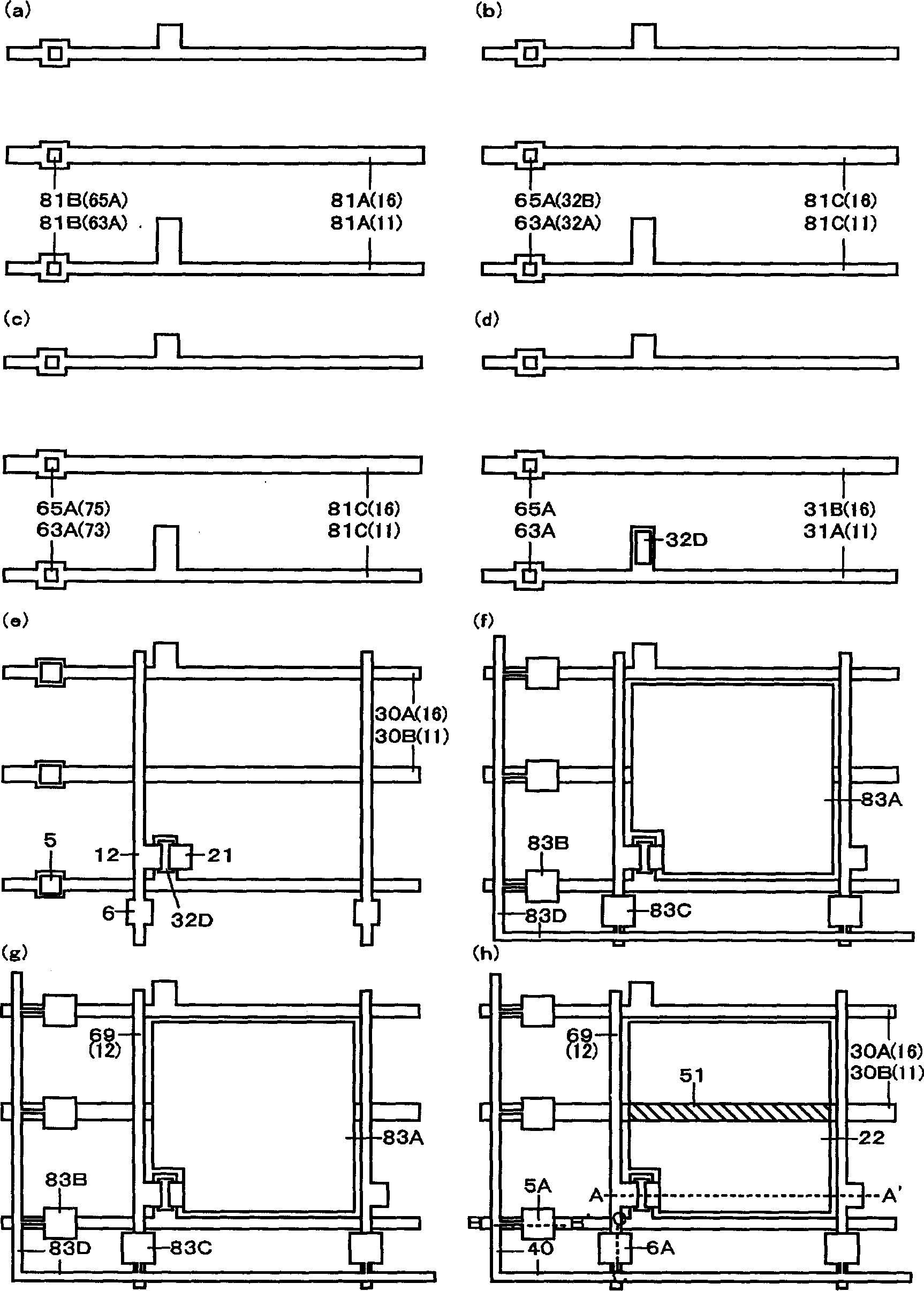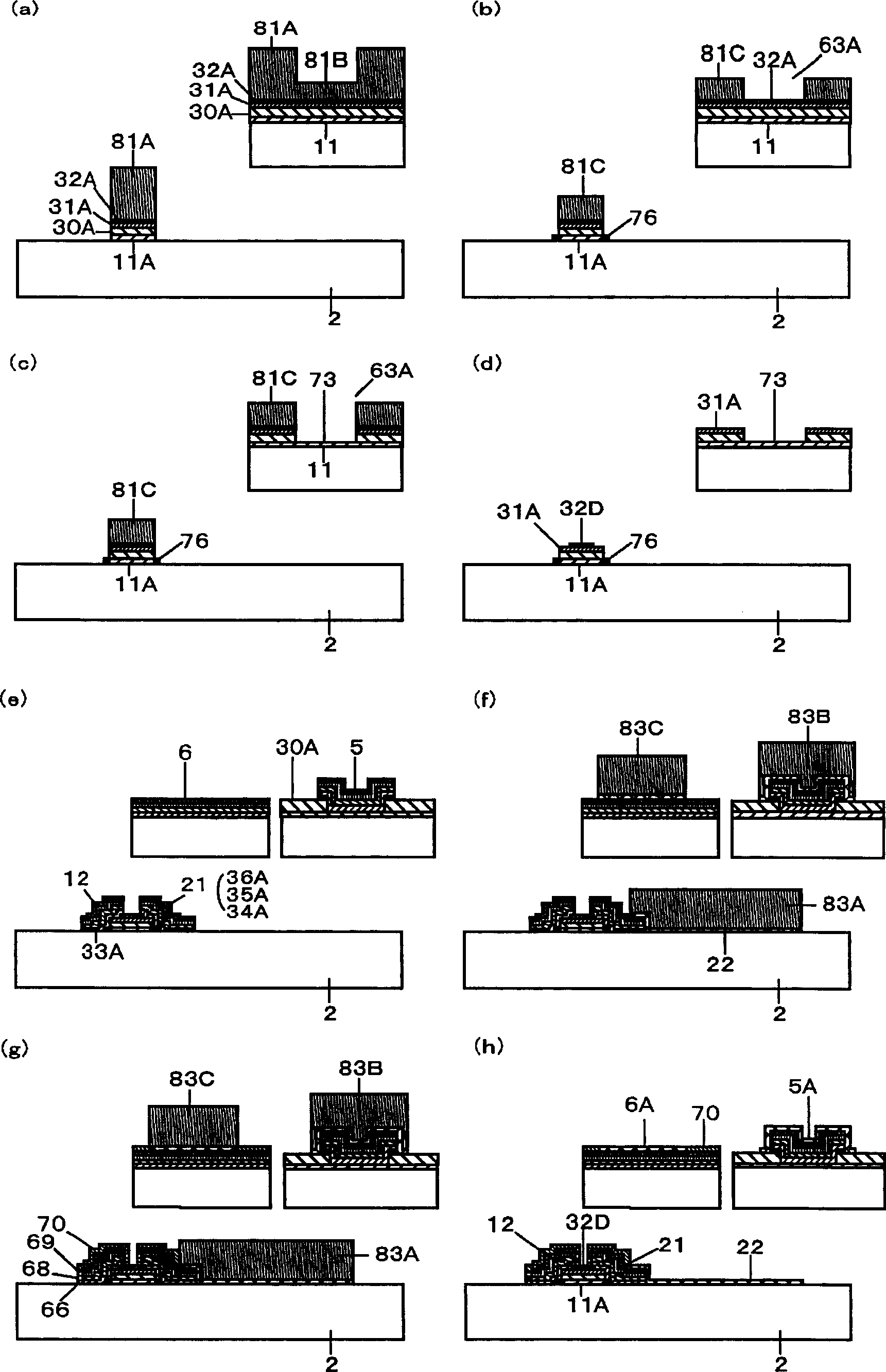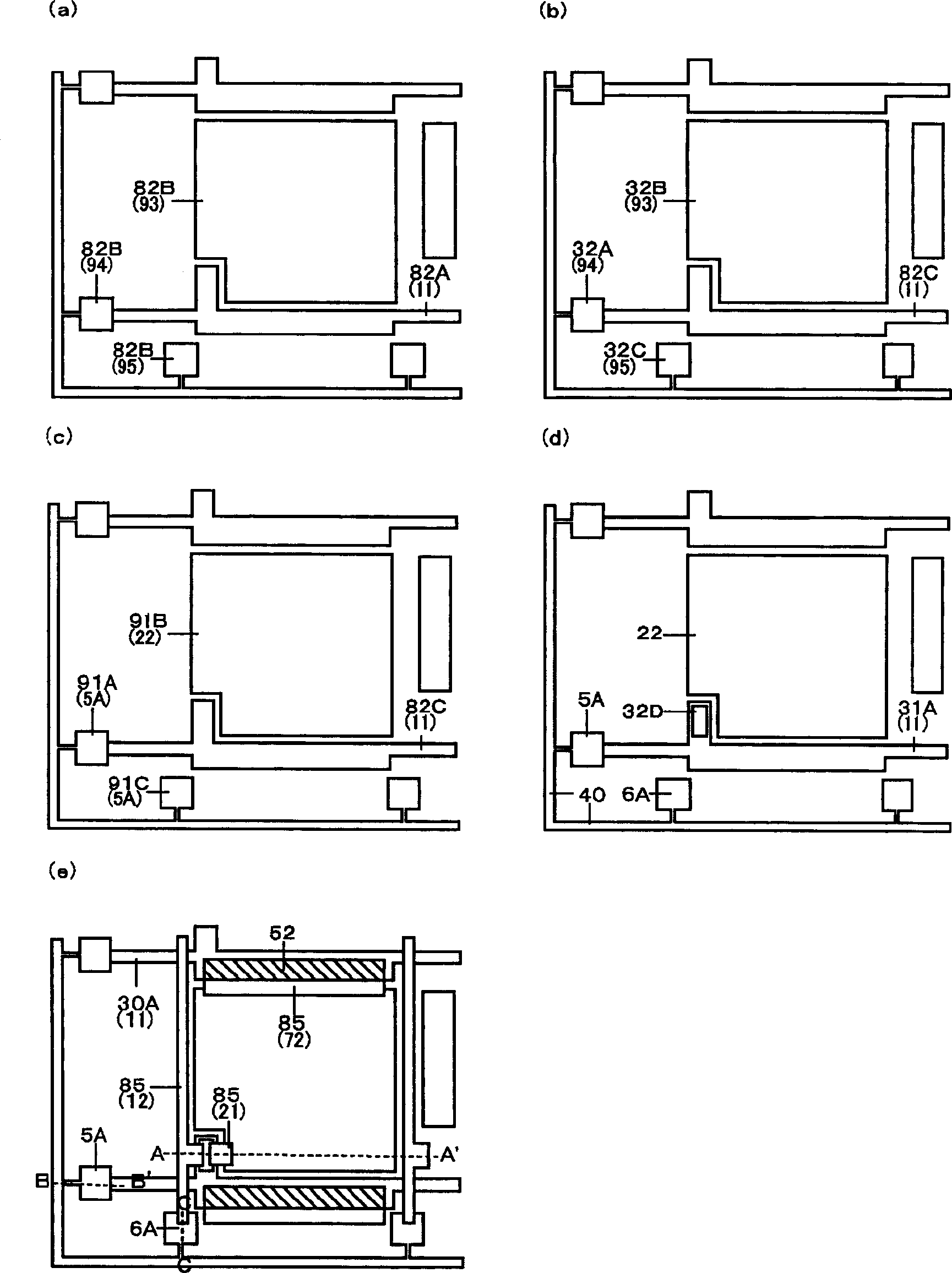Liquid crystal display and its mfg method
A liquid crystal display device, liquid crystal technology, applied in semiconductor/solid-state device manufacturing, static indicators, optics, etc.
- Summary
- Abstract
- Description
- Claims
- Application Information
AI Technical Summary
Problems solved by technology
Method used
Image
Examples
no. 1 Embodiment
[0203] The first embodiment is the same as the conventional example. First, on one main surface of the glass substrate 2, a vacuum film forming device such as SPT is used to coat a film with a thickness of about 0.1 to 0.3 μm, such as Cr, Ta, Mo, or the like. These alloys or silicides are used as the first metal layer. As can be seen from the subsequent description, the present invention has almost no restrictions on the material of the scanning line when selecting an organic insulating layer for the insulating layer formed on the side of the gate insulating layer. However, for the insulating layer formed on the side of the gate insulating layer, select When the anodized film layer is used, the anodized layer must be insulating. At this time, if the high resistance of the Ta monomer and the lack of heat resistance of the Al monomer are taken into consideration, in order to achieve low resistance of the scanning line, The configuration of the scanning line must be selected from...
no. 2 Embodiment
[0218] In the second embodiment, firstly, on one main surface of the glass substrate 2, use a vacuum film-forming device such as SPT to cover: a transparent conductive layer 91 with a film thickness of about 0.1 to 0.2 μm, such as ITO; and a film thickness of 0.1 to 0.2 μm. The transparent conductive layer 91 is about 0.2 μm; and the first metal layer 92 is about 0.1 to 0.3 μm in thickness. It can be seen from the following description that in the second to fourth embodiments, the scan lines are laminated with transparent conductive layers and metal layers, so anodic oxidation cannot be used to form an insulating layer on the side of the scan lines. Here, because the organic insulating layer is formed on the insulating layer by electroplating, as far as the scanning line material is concerned, the first metal layer that does not react with ITO as the transparent conductive layer can be selected, such as Cr, Ta, Mo, etc. Refractory metals or alloys or silicides of these. To ac...
no. 3 Embodiment
[0228] The third embodiment is as Figure 5 (d) and Figure 6 As shown in (d), the steps up to the formation step of the etching stopper layer 32D are substantially the same as those in the second embodiment. However, the dummy electrode terminal 95 is not necessarily required for reasons described later. Next, in the step of forming the source / drain wiring, use a vacuum film forming device such as SPT to sequentially cover: a thin film layer 34 such as Ti and Ta with a film thickness of about 0.1 μm as a heat-resistant metal layer; and a film thickness of 0.3 μm. The left and right AL thin film layers 35 serve as low-resistance wiring layers. Using the photosensitive resin pattern 86 using microfabrication technology, the source / drain wiring material, the second amorphous silicon layer 33, and the first amorphous silicon layer 31A composed of these two thin films are sequentially etched, and The gate insulating layer 30A is exposed. Such as Figure 5 (e) and FIG. 46 (e),...
PUM
| Property | Measurement | Unit |
|---|---|---|
| thickness | aaaaa | aaaaa |
| thickness | aaaaa | aaaaa |
| thickness | aaaaa | aaaaa |
Abstract
Description
Claims
Application Information
 Login to View More
Login to View More - R&D
- Intellectual Property
- Life Sciences
- Materials
- Tech Scout
- Unparalleled Data Quality
- Higher Quality Content
- 60% Fewer Hallucinations
Browse by: Latest US Patents, China's latest patents, Technical Efficacy Thesaurus, Application Domain, Technology Topic, Popular Technical Reports.
© 2025 PatSnap. All rights reserved.Legal|Privacy policy|Modern Slavery Act Transparency Statement|Sitemap|About US| Contact US: help@patsnap.com



